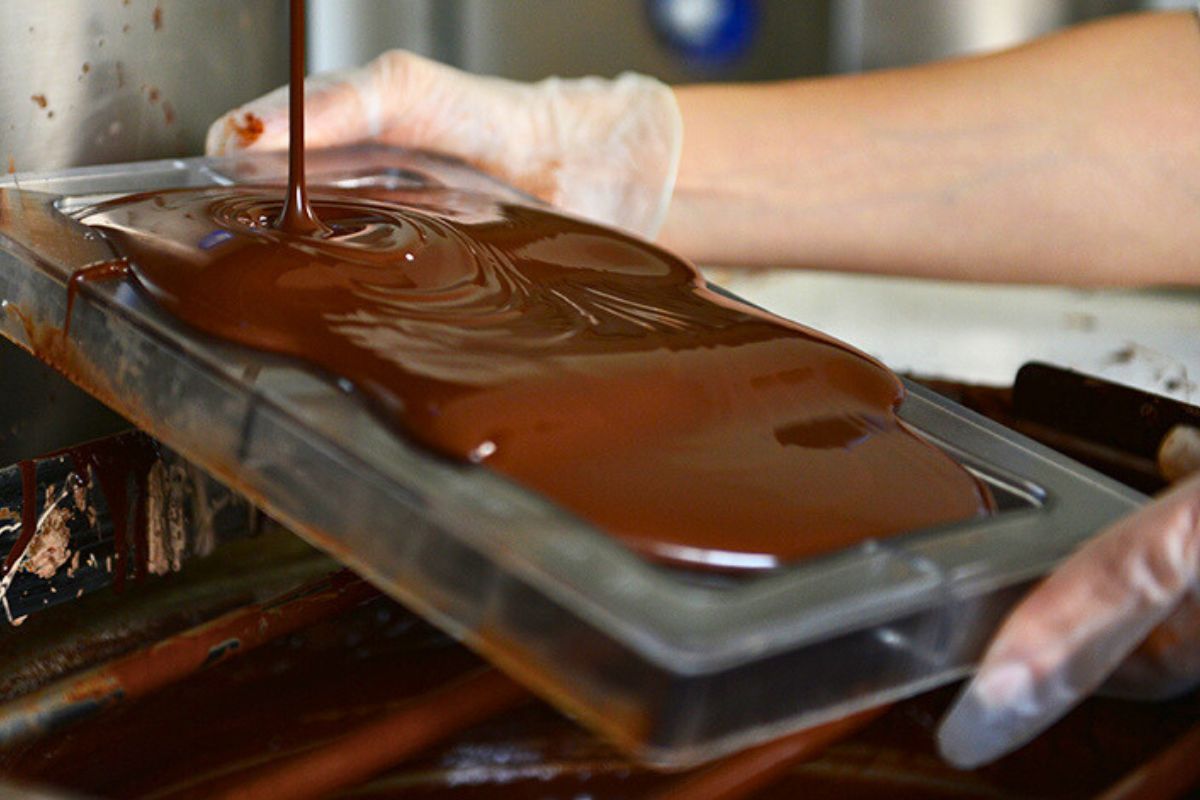

· By Mona Shah
More Cocoa, Less Waste: Nestlé’s Bold Step in Chocolate
When you think of chocolate making, you probably picture cocoa beans being roasted, ground, and transformed into the smooth, rich treat we all love. But what if we told you there’s a whole part of the cocoa fruit that’s been left behind for centuries?
Nestlé has just announced a ground-breaking innovation in chocolate manufacturing that could change everything we thought we knew about how chocolate is made, and it's a big win for the planet, for farmers, and for chocolate lovers everywhere.
Chocolate Making Gets a Sustainable Upgrade
Traditionally, chocolate is made using just one part of the cocoa fruit, the beans. These are the seeds inside the pod that get fermented, dried, roasted, and processed to become the chocolate we know and love.
But that beautiful cocoa pod is made up of so much more than just beans. There's also the pulp, placenta, and outer husk, all of which have historically been discarded or, at best, underused. That’s not just a missed opportunity, it’s a waste of flavour, nutrition, and potential.

Enter Nestlé.
Their team of researchers has developed a novel chocolate-making technique that uses up to 30% more of the cocoa fruit, turning what was once waste into something truly wonderful. By harnessing the entire fruit during the chocolate production process, they’ve found a way to make delicious, high-quality chocolate while significantly reducing waste.
So How Does It Work?
Nestlé’s new technique involves collecting the entire cocoa pod, including the beans, pulp, and placenta, as a wet mass. This is then allowed to naturally ferment, which helps to develop the deep, complex chocolate flavour we all crave.
Once the fermentation is complete, the mass is ground, roasted, and dried into chocolate flakes, which are then used to create finished chocolate products.
It’s a process that doesn’t compromise on quality or flavour. In fact, the end result is still the rich, indulgent chocolate we know and love, only now it comes with a little extra goodness.
Why This Matters: The Impact of Climate and Cocoa Yields
With climate change affecting cocoa farming around the world, this innovation couldn’t come at a better time. Less reliable weather, disease, and ageing trees are all putting pressure on cocoa farmers, making it harder to meet demand and maintain livelihoods.
That’s exactly what this technique hopes to combat, by creating more yield, less waste, and more efficient harvesting.
Innovation That Tastes Good and Does Good
While the use of cocoa pulp isn’t entirely new (some companies have explored cocoa pulp juice and natural sweeteners) Nestlé’s method is more holistic.
A notable example is Barry Callebaut’s Cacaofruit range, which repurposes the cocoa fruit into juices, concentrates, and powders. These efforts have helped raise awareness about the potential of the whole cocoa fruit, but Nestlé’s approach takes it one step further, using all the parts in one seamless chocolate manufacturing process.
This means less energy spent creating separate products, more sustainable chocolate making overall, and a bigger impact at scale.
A Boost for Farmers
This isn’t just about making chocolate greener, it’s also about making life a bit better for the people who grow it.

By allowing more of the cocoa pod to be used in production, farmers can potentially get more value from each harvest. Nestlé also believes this new approach could streamline the harvesting process, freeing up time for other key agricultural tasks like pruning, which is proven to increase yields.
That’s not just a win for the environment, it’s a win for social and economic sustainability too.
What's Next?
Right now, this new method is still in the pilot stage, but the hope is that it will be scaled up and adopted more widely. If successful, it could mark a major shift in chocolate making, one where waste is reduced, farmers are supported, and flavour isn’t compromised.
It’s a reminder that innovation doesn’t always mean creating something new, sometimes, it means looking at what’s already there in a different way.
The Future of Sustainable Chocolate
At Harry Specters, we’re passionate about how great chocolate can do great things. Whether it’s through our ethical sourcing or our commitment to employing and training autistic individuals, we believe every bar and box should bring joy, to the person eating it, and to the people behind the scenes.
We love seeing innovation like this in our industry. Sustainable chocolate isn’t just a trend, it’s the future. And when major players like Nestlé are making bold moves to reduce waste and support farmers, we all benefit.
So the next time you take a bite of your favourite chocolate bar, remember: the cocoa bean may be the star, but the whole fruit has something special to offer.
